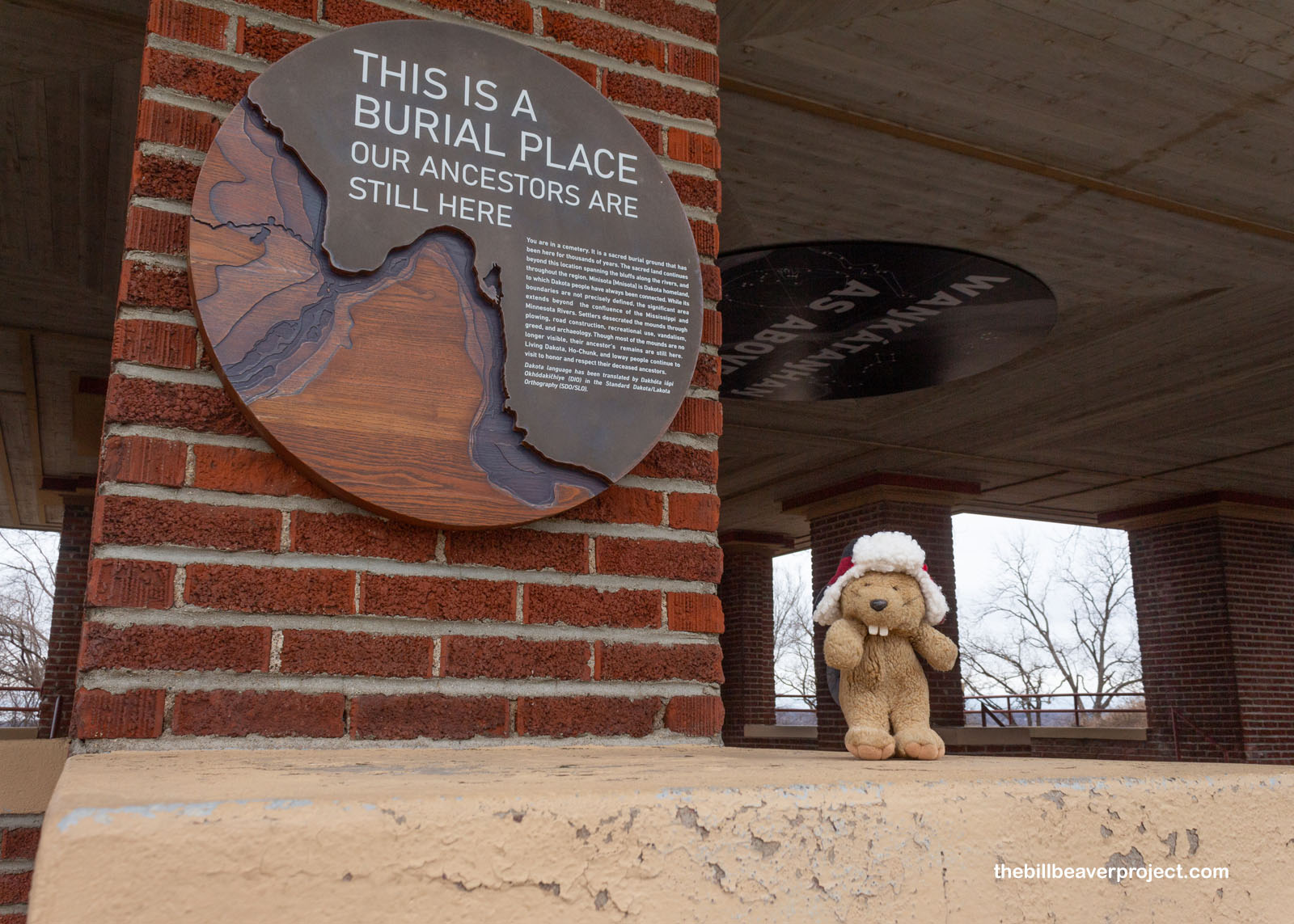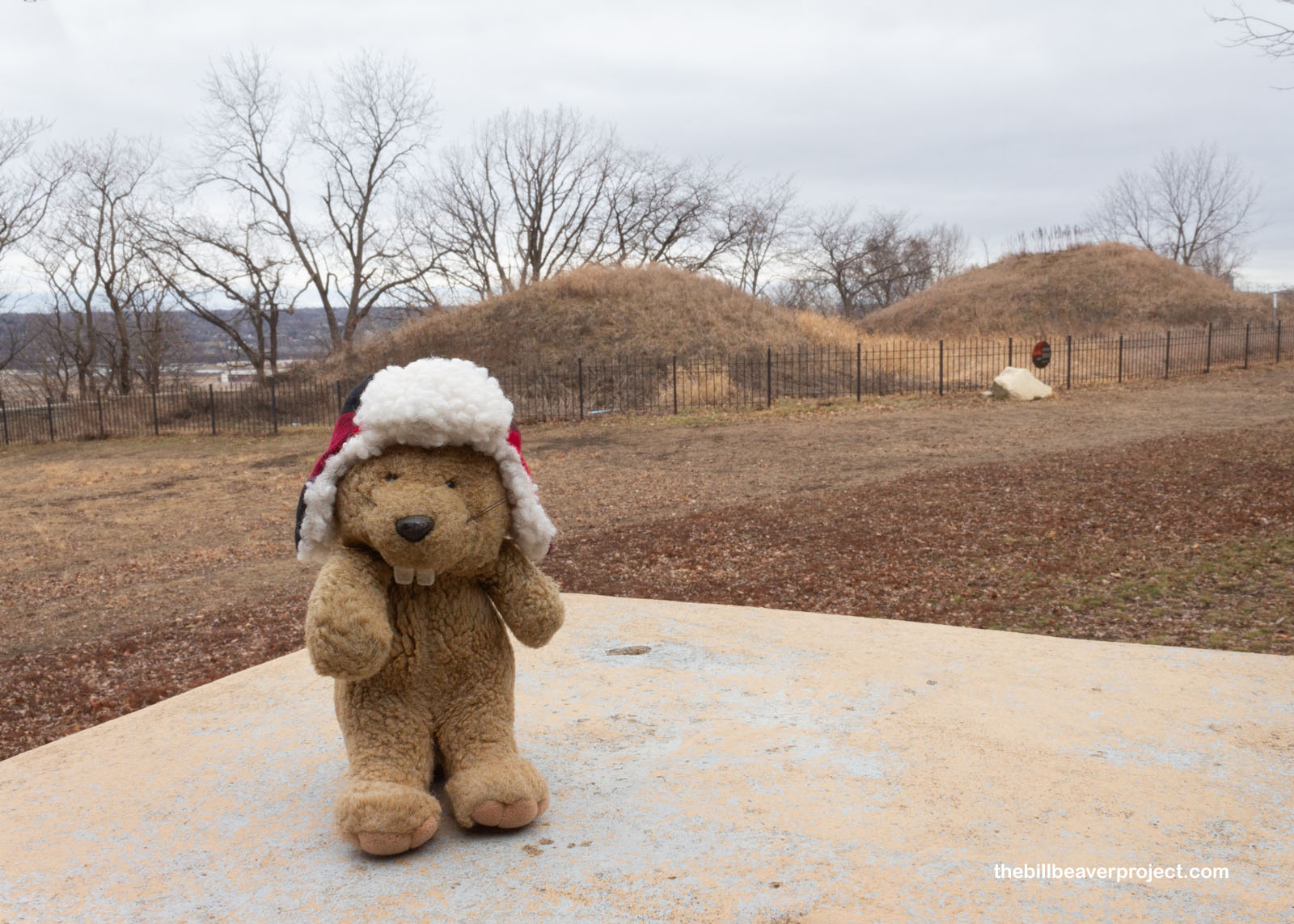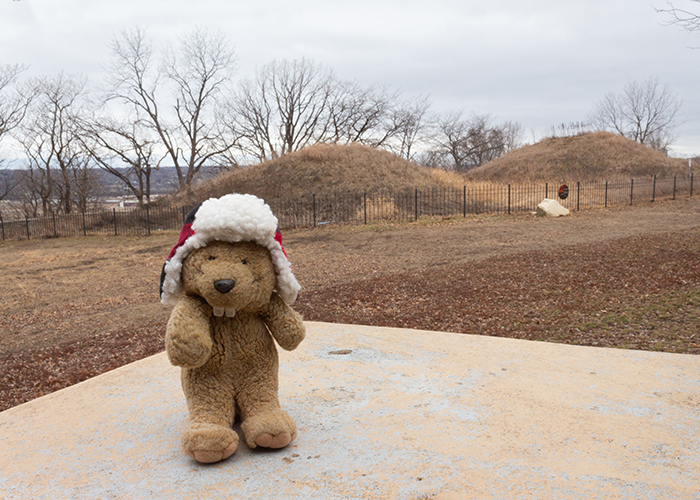
What Is Indian Mounds Regional Park?
This park preserves and showcases the last six burial mounds of St. Paul’s Native ancestors, dating back to at least 200 BCE!
What Makes It Historical?
In the Dakota language, this whole region is Maka Cokaya Kin, the Center of the World! The earliest people came down here from the stars, so the descendants of the Star Nation (Wicahpi Oyate) buried their relatives in mounds on this bluff where they could rest a close to their stellar home as possible. This place is called Imnížaska, the White Cliffs, where earth, water, and sky meet! When a person dies, their body becomes sacred and should be left in its burial robe with all its possessions (knives, food, pipes, even canoes) intact! Sadly, not everyone felt the same way.
There were thirty-seven mounds here when St. Paul was incorporated in 1854, important to at least seven different nations: the Prairie Island Indian Community, Ho-Chunk Nation of Wisconsin, Iowa Tribe of Kansas and Nebraska, Sisseton-Wahpeton Oyate, and the Upper, Lower, & Shakopee Mdewakanton Sioux Communities! Only, for the city’s first forty years, Imnížaska was devastated by municipal growth! Mounds were flattened for roads, while the cliffs themselves were completely carved away to quarry limestone! Excavations of the mounds (the first excavations in Minnesota) began in 1856 under Edward Duffield Neill and continued into the late 1880s, cutting up the mounds with trenches. A child’s skull, covered in a mask of red clay, connected these burials with others in the “Hopewell” tradition that spanned from Missouri to New York between 200 BCE and 500 CE! That mask has since disappeared from the collections of the Minnesota Historical Society in the 1970s.
Today, these mounds play a key part in revitalizing Dakota language and beliefs, which were illegal for most of the 20th Century. The interpretive signs here are both in English and in Dakota, using a writing system developed at the University of Minnesota! While there are many gaps in the record after years of suppression, incorporating this Native language into the site strengthens the bond between these ancestors and their still living descendants!
How Can I #HelpTheHelpers?
- Volunteer with Great River Greening!
- Donate to the Minnesota Historical Society!
- Be a responsible visitor! Please respect the signs and pathways, and treat all structures and artifacts with respect. They’ve endured a lot to survive into the present. They’ll need our help to make it into the future!
How Do I Get There?
10 Mounds Blvd
Saint Paul, MN 55106
(Take Me There!)
When Should I Visit?
The park is officially open from sunrise to 11:00 PM!
More Photos

